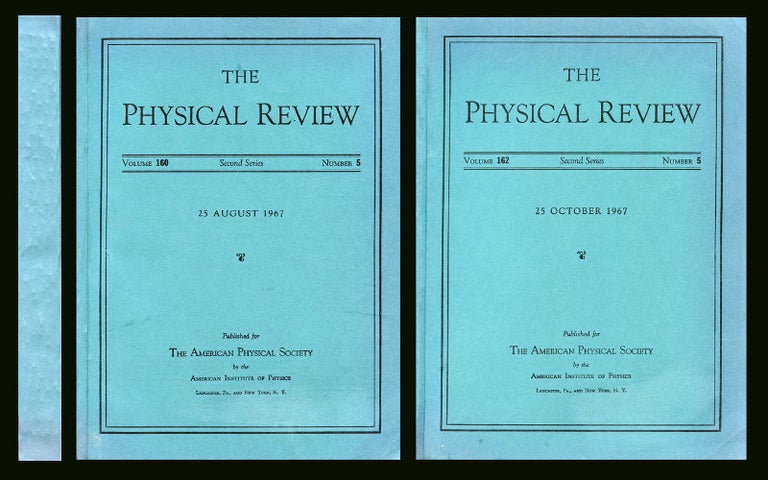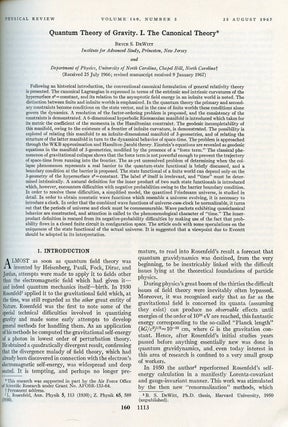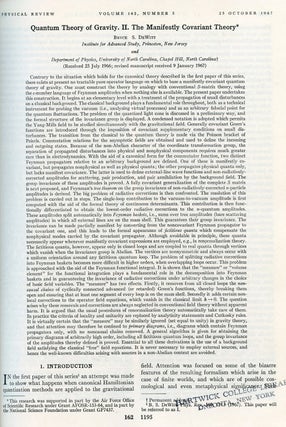Quantum Theory of Gravity. I. The Canonical Theory (Physical Review 160 No. 5 pp. 1113-1148, 25 August 1967) and Quantum Theory of Gravity. II. The Manifestly Covariant Theory. III. Applications of the Covariant Theory (Physical Review 162, No. 5, pp. 1195-1238 and 1239-1256, 25 October 1967)
Lancaster: The American Physical Society, 1967. 1st Edition. TWO ISSUE FIRST EDITION IN ORIGINAL WRAPS of all three parts of Bryce DeWitt’s paper on quantum gravity, including the introduction of the Wheeler-DeWitt equation. Near fine condition. Quantum gravity attempts to unify quantum mechanics (which describes the behavior of electromagnetism, the weak interaction and the strong interaction) with general relativity (the theory of gravity).
In these works, DeWitt, known as the father of quantum gravity, formed important calculations on quantum gravity highly controversial and important to modern theoretical physics. The Wheeler-DeWitt “equation expresses the expectation that the total energy of a closed universe vanishes” (Liebscher, Cosmology, 269). It is a “cosmic Schrodinger equation” that describes the whole universe - both atoms and galaxies - in a unified manner. Although controversial, the equation unifies deep properties of both quantum theory and general relativity.
“The Wheeler–DeWitt equation is a functional differential equation on the space of three dimensional spatial metrics. It is ill defined in the general case, but very important in theoretical physics, especially in quantum gravity. The equation has the form of an operator acting on a wave functional, the functional reduces to a function in cosmology. Contrary to the general case, the Wheeler–DeWitt equation is well defined in mini-superspaces like the configuration space of cosmological theories” (Wikipedia). Item #231
CONDITION & DETAILS: Lancaster: The American Physical Society. Volume 160 and 162 in original wraps. 4to (10.5 x 8 inches; 263 x 200mm). Professionally rebacked at the spine. Small stamp at the foot of the second paper. Near fine condition inside and out.
Price: $800.00



